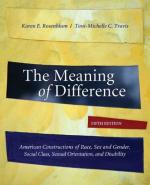|
This section contains 1,057 words (approx. 4 pages at 300 words per page) |

|
The biological basis of sexual orientation (heterosexuality, homosexuality, or bisexuality) has long been a topic of controversy in both science and society. A growing body of research supports the view that genetics and the environment work together to determine sexual orientation. Some issues remain unclear. First, how much of sexual orientation is genetic and how much is shaped by environmental influences, including family, society, and culture? Second, is sexual orientation a fixed trait, or is it subject to environmental influence and changeable over time? Two types of genetic studies, classical family/twin/adoption studies and biological/molecular studies, support multiple genetic and environmental determinants in male and female sexual orientation.
Twin and Family Studies
Twin studies are a classic tool for examining the role of genes. Twins brought up together share a similar environment. Monozygotic twins share all their genes, while dizygotic twins share only half...
|
This section contains 1,057 words (approx. 4 pages at 300 words per page) |

|


